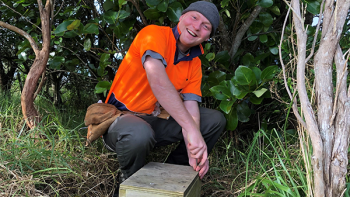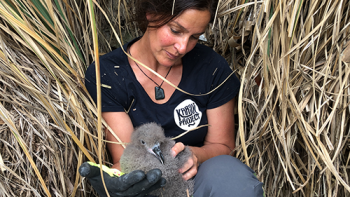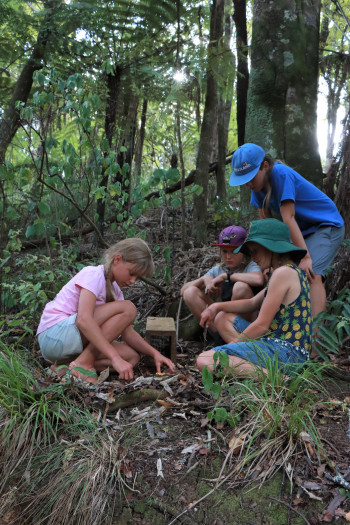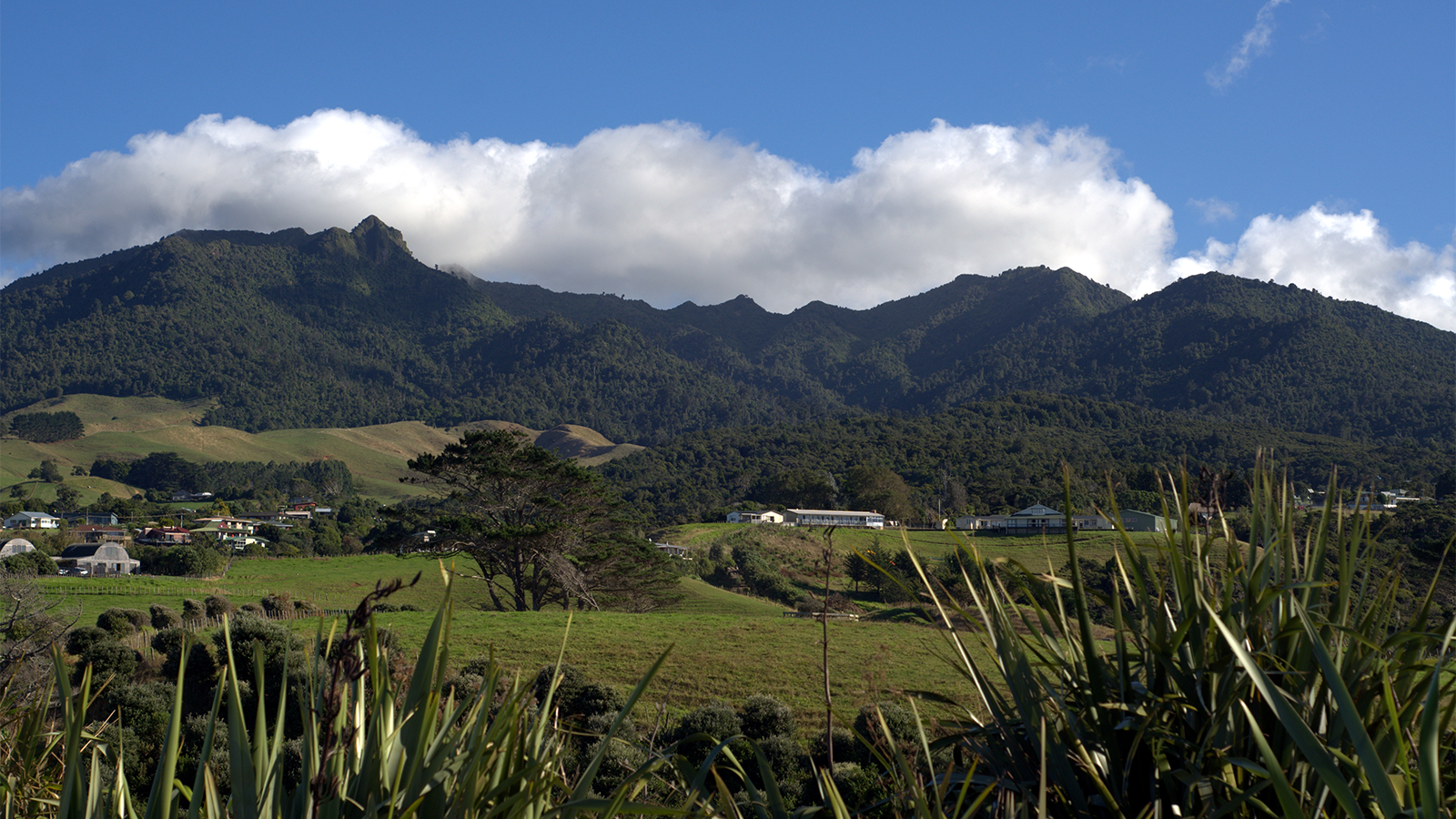“Being introduced to the Karioi Project allowed me to delve into my curiosity about our native ecosystems and collaborate on strategies to protect them. The experiences I gained during this programme has profoundly influenced my path.”
- Lenny Reynolds, Karioi Project team member
In year 12 at Raglan Area School, Lenny Reynolds had no idea what he wanted to do and be – and found that quite daunting.
But through the Manaaki Ao (Earthcare) programme, created by Karioi Project and Raglan Area School, he found a commitment to conservation and is now dedicated to making a positive impact “on our precious ecosystems”.
The 21-year-old is now working part-time as a ranger for the landscape-scale restoration Karioi project, while studying for a degree in ecology and biodiversity at the University of Waikato.

Lenny Reynolds has found his niche “making a positive impact on our precious ecosystems”.
He is one of a number of Manaaki Ao students who have been inspired to further their education in environmental sciences and return to Raglan to join the Karioi Project team.
“Raglan Area School is really good at instilling an understanding of our biodiversity and the importance of conserving it, but Manaaki Ao was a really good way of putting that into practise and seeing it as a viable option as a job,” says Lenny, who works with the project’s Backyard Hub initiative and teaches children about biodiversity and biosecurity through projects in schools and after-school environmental programmes.
“The programme really gives you the ability to step away from the classroom where we tend to be given this feeling of ‘oh you have to go and get a job’ and this very anthropocentric view of the world.
“Being introduced to the Karioi Project allowed me to delve into my curiosity about our native ecosystems and collaborate on strategies to protect them. The experiences I gained during this programme have profoundly influenced my path.”
The Karioi Project was started by a small group of Raglan residents, including project manager Kristel Van Houte, about 14 years ago.
What started as a trapping programme in 10 hectares of native bush on the coast has grown into a community-led predator control programme over 2300 hectares of private and public conservation land, with the aim of restoring a mainland population of seabirds on Karioi.

Manager Kristel Van Houte helped start the Karioi Project to restore a seabird population to the maunga about 14 years ago.
Thanks to the efforts of the more than 100 regular volunteers, who check over 2500 traps every fortnight, ōi/grey-faced petrel and kororā/little blue penguin are successfully breeding in burrows along the coast.
Kristel says the project has expanded over the years to include after-school environmental educational programmes Karioi Kids (aged 7-9) and Karioi Rangers (9-12), the Karioi School Holiday Programme and Manaaki Ao Earthcare for Raglan Area School students (6-16). Another initiative, the Backyard Hub, encourages Raglan residents to trap in their own backyard, while a seabird monitoring programme helps measure the project’s success.
Relying on funding for financial support, including from Waikato Regional Council’s Natural Heritage Fund since 2016, the project now employs eight part time team members, including Backyard Hub coordinators, rangers and educators.
“We started with Karioi Kids first, 10 years ago exactly, because we wanted to inspire the next generation to continue with the work that we do,” says Kristel.
“It gives me hope when I see young people stepping up into the opportunities this project creates.

Karioi Kids.
“And it’s been really awesome because through the Maanaki Ao programme, we’ve had quite a few of the crew go on to study in this space and come back and join our team.
“These guys who come back, and who may one day take over, they really give you hope for the future.”
Kristel says there’s also now a stronger recognition in the community that being in nature doing restoration work can be both contemplative and practical, and it supports the wellbeing and mental health of our rangatahi.
“The conservation activities we do with the kids teaches them about conservation, but it also teaches them how to work in teams, recognise each other’s strengths and the challenges we face, and respect each other. And for the older ones, they start to see the employment opportunities to be had.
“You never start these things thinking ‘we’re going to start a big project’, you just get stuck in doing things because you’re passionate and want to make a difference, and then realise, oh heck what have we started?
“But we’re here because this community supports it, wants it, volunteers for it ... every time we grow and take on new opportunities it's because someone has believed in the cause or has stepped up to help us achieve another milestone. These kinds of projects are always about working collaboratively and growing within ourselves as much as doing the hard work.”
Waikato Regional Council Biodiversity Partnerships Lead Nicky Ismay says the council’s Natural Heritage Fund was set up to help protect and manage, in perpetuity, special places of ecological significance.
“Natural heritage projects are about improved biodiversity outcomes and long intergenerational benefits. It’s so inspiring to see how much the Karioi Project has grown over the years and the journey the community is on to take a stand for nature, now and into the future.”
About ōi on Karioi
- Every April, oī return to Karioi for the breeding season. There is a lot of activity as pairs return to clear and excavate burrows, and mate, before returning to sea.
- In July, the ōi pairs come back to lay their eggs. Parents share the care of usually one egg and the chick until they fledge (usually in December).
- A specialist seabird detection dog is used to locate new burrows and active burrows.
- Traps are installed throughout the ōi coastal breeding habitat. Monitoring cameras are set up to record nesting activity 24/7 and detect any potential predators. The burrows are visited weekly by the Karioi Project monitoring team.
- There are about 40-50 active burrows throughout a breeding season, and more than 70 known burrow sites.
- A total of 47 ōi chicks have successfully fledged as part of the project in the past six years.
- Ōi chicks spend a lot of time alone on the nest while their parents are out at sea gathering food, which makes them vulnerable to predators. Chicks are left alone from 2 days of age, with their parents returning to the nest every 7-10 days to feed them.
- Rats, stoats, cats, dogs are ōi’s main predators, and a single stoat can annihilate a colony in one night.
- After fledging, young ōi will spend six to seven years at sea before returning to the Karioi to breed.



To ask for help or report a problem, contact us
Tell us how we can improve the information on this page. (optional)